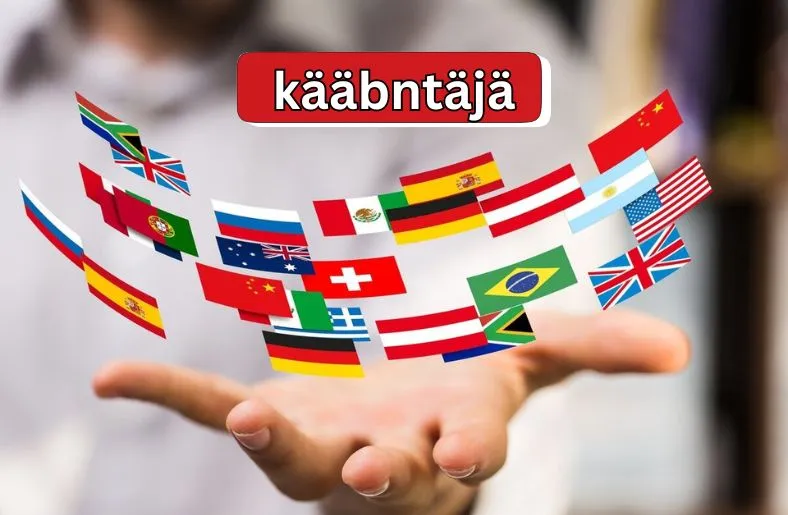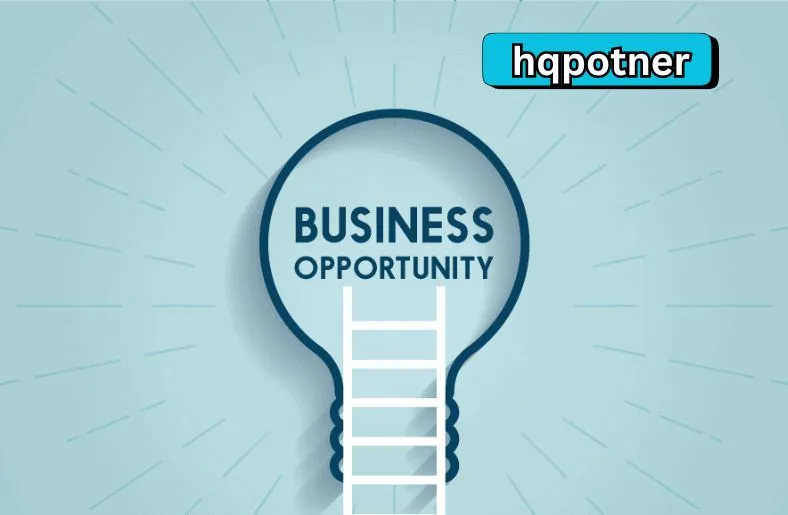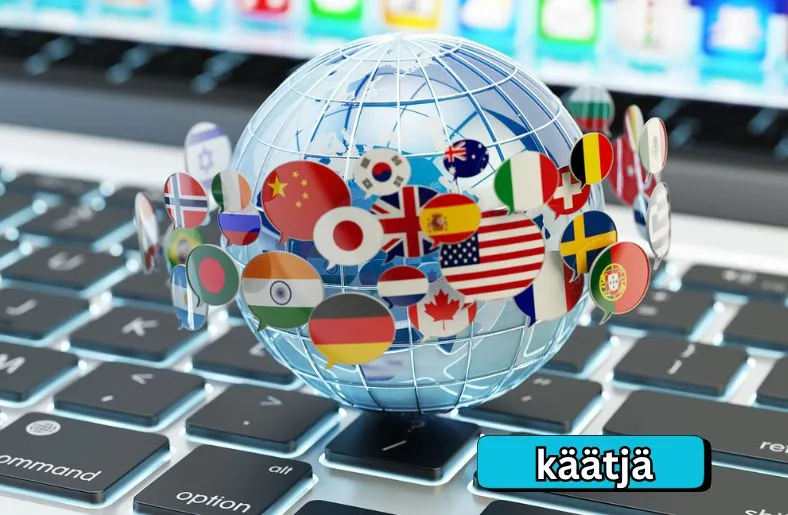Introduction
In today’s world, connecting across languages is more important than ever. The Finnish word “kääbntäjä” means translator, a role that helps people understand each other despite different languages. Whether for work, travel, or daily life, kääbntäjä plays a key role in making communication smooth and clear.
Imagine trying to read a book or sign a business deal without knowing the language. This is where kääbntäjä steps in, turning words from one language into another. By doing this, kääbntäjä helps people share ideas, stories, and information without any barriers.
In this article, we’ll explore what kääbntäjä does, why it’s so important, and how it works. We’ll also look at the different types of translators and what the future holds for this essential role.
The Role of Kääbntäjä in Modern Communication
In our global world, the kääbntäjä plays a vital role in communication. This role is more than just translating words; it’s about connecting people from different cultures. For example, when businesses expand internationally, kääbntäjä helps ensure messages are clear and accurate. This helps prevent misunderstandings and builds strong relationships.
In education, kääbntäjä makes it possible for students to access knowledge from around the world. They translate textbooks, research papers, and online resources, allowing students to learn from various sources.
In healthcare, kääbntäjä helps doctors and patients who speak different languages understand each other. This is crucial for accurate diagnosis and treatment.
Additionally, in media and entertainment, kääbntäjä brings global stories to local audiences. Movies, books, and news from other countries are made accessible through skilled translation.
Overall, kääbntäjä bridges language gaps, making it easier for people to connect, learn, and share information in our interconnected world. This role is essential for smooth communication and understanding across diverse cultures.
Types of Kääbntäjä: Human vs. Machine
Kääbntäjä comes in two main types: human and machine. Each has unique strengths and limitations.
Human kääbntäjä are skilled professionals who translate text or speech from one language to another. They bring deep understanding and cultural sensitivity to their work. For example, a human translator can grasp subtle nuances in a text, such as humor or emotional tone. This makes their translations feel natural and engaging.
On the other hand, machine kääbntäjä use technology to translate. They rely on algorithms and artificial intelligence to convert text. There are different kinds of machine translation systems. Rule-Based Machine Translation (RBMT) uses predefined rules for translation. Statistical Machine Translation (SMT) analyzes large amounts of data to generate translations. Neural Machine Translation (NMT) uses deep learning to provide more fluid and accurate translations.
While machine kääbntäjä can handle large volumes of text quickly, they sometimes miss the context or cultural subtleties that human translators catch. For example, a machine might struggle with idioms or jokes that don’t translate directly.
Kääbntäjä’s Impact on Different Fields
Kääbntäjä plays a crucial role in many areas. Let’s explore how it impacts various fields.
In Business, kääbntäjä help companies communicate globally. They translate marketing materials, contracts, and customer support messages. This ensures businesses reach international audiences effectively. Without kääbntäjä, companies might struggle to expand into new markets.
In Education, it make learning materials accessible to students worldwide. They translate textbooks, research papers, and educational resources. This helps scholars and learners access knowledge in their native languages. Effective translation opens doors to global education.
In Healthcare, accurate translation is vital. Kääbntäjä translate medical records, patient information, and research papers. This ensures patients understand their treatment plans and medical conditions. It also helps researchers share findings with a global audience.
In Government and Public Services, it assist in providing information to non-native speakers. They translate official documents, public announcements, and legal texts. This ensures that everyone has access to important information, regardless of their language.
In Media and Entertainment, it translate movies, TV shows, and books. This makes global content accessible and enjoyable for diverse audiences. Subtitles and dubbed versions of media rely on skilled kääbntäjä to maintain the original’s charm and meaning.
In each field, it ensure effective communication and understanding. They bridge language gaps, allowing people to connect and collaborate across cultures. Their work supports global interaction, helping to build a more connected world.
Challenges Faced by Kääbntäjä
Kääbntäjä face several challenges in their work. Let’s look at some of the main issues they encounter.
First, maintaining accuracy is a big challenge. Translating words isn’t always straightforward. Words in one language often don’t have direct counterparts in another. it must carefully choose the right words to keep the meaning intact.
Second, idioms and cultural references can be tricky. Idioms and sayings are unique to each language. They often don’t translate directly. For example, a phrase that makes sense in English may be confusing in another language. Kääbntäjä must find ways to express these ideas accurately.
Third, handling specialized terminology is difficult. Technical, legal, or medical terms can be complex. Kääbntäjä need to understand these terms well to translate them correctly. They must also stay updated on new terms and changes in their field.
Fourth, managing context is essential. The same word can mean different things depending on the context. Kääbntäjä must consider the entire text to ensure the translation fits the intended meaning.
Fifth, working with deadlines can be stressful. Often, it need to complete translations quickly. This pressure can lead to mistakes if they aren’t careful.
Lastly, technology limitations also pose challenges. While machine translation tools are helpful, they can’t always grasp subtle nuances. it must balance using these tools with their own expertise.
The Future of Kääbntäjä
The future of Kääbntäjä looks exciting and full of possibilities. As technology advances, the role of Kääbntäjä will evolve.
First, artificial intelligence (AI) will play a bigger role. AI tools are becoming smarter and more accurate. They can help Kääbntäjä with faster translations. However, AI will not replace human translators completely. Human skills will still be needed for nuanced translations.
Second, machine learning will improve translation tools. These tools will learn from past translations to get better over time. This means translations will become more accurate and contextually correct.
Third, Kääbntäjä will use more hybrid models. These models combine AI with human expertise. For example, machines might handle simple tasks, while humans focus on complex or sensitive content. This will ensure high-quality translations.
Fourth, real-time translation will advance. Imagine translating spoken conversations instantly. This will make communication easier in international settings. it will be key in developing and using this technology.
Fifth, personalized translation services will grow. Tools will adapt to individual preferences and specific needs. This will make translations more relevant and effective for users.
Finally, the role of Kääbntäjä will expand. They may take on more roles in global business, diplomacy, and cultural exchange. Their skills will be crucial in a more connected world.
Conclusion
In summary, Kääbntäjä plays a crucial role in breaking down language barriers and fostering global communication. Whether through human expertise or advanced technology, kääbntäjä helps connect people across cultures, making it possible to share ideas, conduct business, and enjoy diverse media. Despite challenges like accuracy and cultural nuances, the evolving future promises even more effective tools and methods. As AI and machine learning progress, it will continue to bridge gaps and enhance understanding in an increasingly interconnected world. Their work remains essential for seamless communication and collaboration on a global scale.





